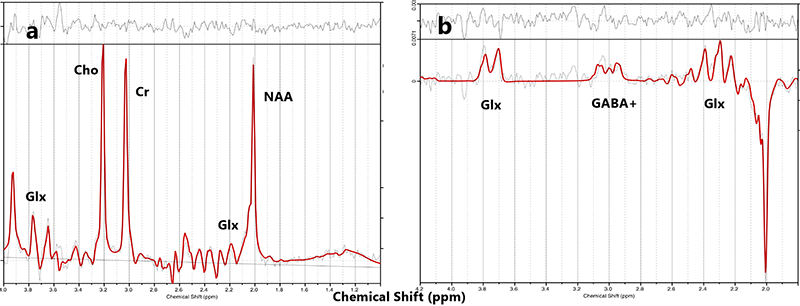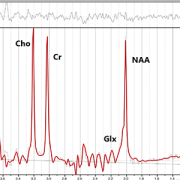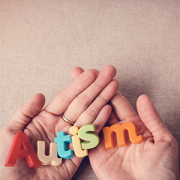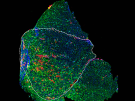GABA and glutamate in the preterm neonatal brain
Preterm and sick newborns are at high risk of brain injury that can lead to cognitive delays and behavioral disorders including autism and ADHD. Gamma-aminobutyric acid (GABA) and glutamate system disruptions may underlie these neonatal brain injuries and hence it is important to describe their normative profile in the developing neonatal brain.
In a study led by Sudeepta Basu, M.D., neonatologist at Children’s National Hospital and Assistant Professor of Pediatrics at George Washington University School of Medicine and Health Sciences, specialized GABA editing spectroscopy (MEGA-PRESS) was acquired on a 3Tesla MRI scanner. Although MEGA-PRESS has been used in older subjects, there are challenges in the newborn population that have limited investigations with only a few institutions worldwide. Under the leadership of Catherine Limperopoulos, Ph.D., in the Developing Brain Institute (DBI) at Children’s National, a team of scientists (in particular, Dr. Subechhya Pradhan) have diligently overcome the technical challenges to enable use of this cutting-edge technology for research at the institute.
With this unique capability, Dr. Basu’s team prospectively enrolled 58 healthy newborns to describe the normal GABA and glutamate concentrations in different regions of the developing brain. In a recent article published in the American Journal of Neuroradiology, Dr. Basu reports that GABA and glutamate concentrations were highest in the cerebellum, slightly lower in the basal ganglia, but significantly lower in the frontal lobe.
“Our ability to reliably describe the normal metabolic-neurotransmitter milieu of the developing newborn brain is the first step in filling a critical gap in knowledge,” says Dr. Basu. “We hope to identify early bio-markers of brain injury of cognitive delays and autism and ADHD risk which remains a major challenge until clinical symptoms manifest later in childhood.”
Under the direction of Dr. Limperopoulos, advanced multi-modal high precision MRI protocols have been developed for use in research studies at Children’s National that allows the scientists to identify subtle signs of delayed growth and development of the newborn brain. With the optimization of MEGA-PRESS for newborns, Children’s National is one of a few institutions worldwide capable of investigating the newborn brain neurotransmitters in future research studies.
Read the full article in American Journal of Neuroradiology.

Representative OFF and DIFF spectra.









